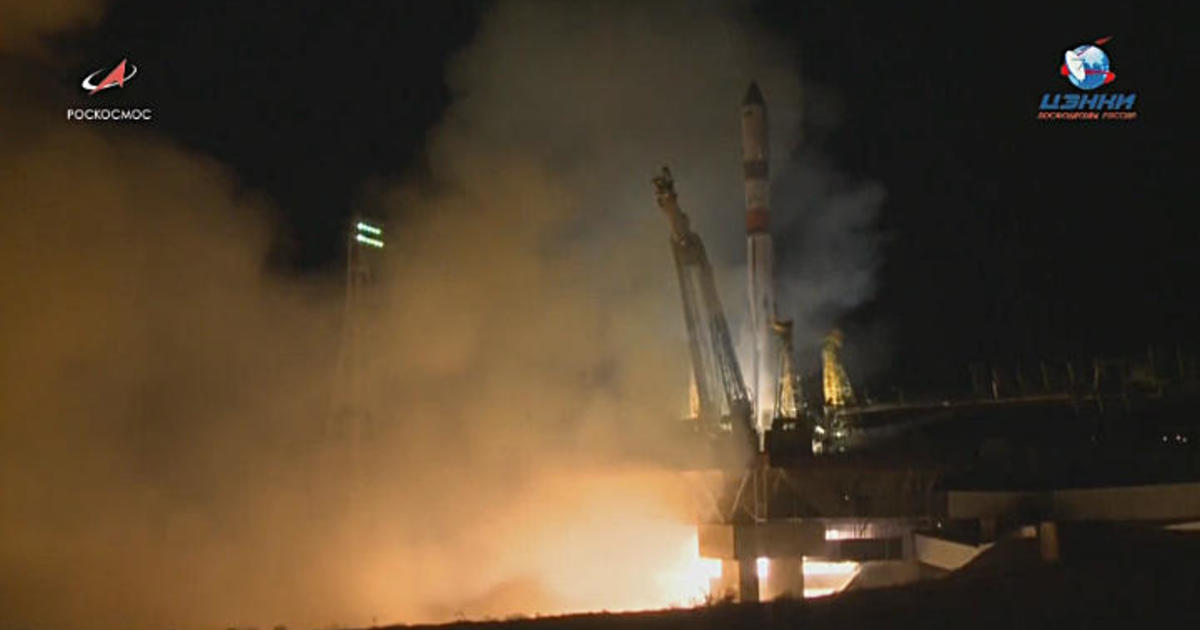
Last Updated Jul 9, 2018 6:07 PM EDT
An unpiloted Russian Progress supply ship loaded with 2.8 tons of supplies and equipment blasted off from Kazakhstan and shot into orbit Monday at almost the same moment the International Space Station was passing directly overhead, setting up an abbreviated three-and-a-half-hour rendezvous — the fastest ever for the station program.
The goal is to shorten the time it takes a station crew, riding inside a cramped Soyuz ferry ship, to reach the station, a trip that traditionally took two days, or 34 orbits. The Russians already have tested a four-orbit six-hour rendezvous but the new technique would shave off even more time — a welcome relief to astronauts and cosmonauts.
The Russians attempted such a fast-track rendezvous on the two most recent Progress launches but in both cases, delays were ordered because of unrelated issues in the final moments of the countdown. Because of complex orbital constraints — a variety of launch-day specific conditions must be met — both spacecraft eventually used more traditional two-day approaches.
But the third time was the charm Monday, the countdown ticked smoothly to zero and the Progress MS-09/70P spacecraft thundered to life at 5:51:34 p.m. EDT (GMT-4; 3:51 a.m. Tuesday local time) and climbed away from the Baikonur Cosmodrome.
At the moment of launch, the International Space Station, streaking through space at nearly five miles per second, was 370 miles to the southwest of Baikonur. Fifty-nine seconds after liftoff, the station passed 260 miles directly above the launch site and a few moments later, leap-frogged ahead of the cargo ship.
By the time the Progress spacecraft separated from the third stage eight minutes and 45 second after takeoff, the lab complex was 1,004 miles ahead with both spacecraft in the same orbital plane.
The exact timing of the launch, the distance between the supply ship and the station when the Progress reached orbit and the precise orientation of their orbits were critical to enabling the two-orbit rendezvous.
Given the picture-perfect launch, the automated Progress was expected to catch up with its quarry after a series of carefully timed rendezvous rocket firings to adjust the supply ship’s altitude, gliding to a docking at the Earth-facing Pirs module around 9:39 p.m.
On board: 1,168 pounds of propellant to help maintain the station’s orbit, 3,450 pounds of dry cargo, crew supplies and spare parts, 114 pounds of oxygen and air and 926 pounds of water.
Two U.S. cargo ships also are attached to the station — a SpaceX Dragon capsule that arrived July 2 and a Northrup Grumman (formerly Orbital ATK) Cygnus spacecraft that arrived in May.
The Cygnus, scheduled to depart July 15, will be used Tuesday for a test to find out whether the U.S. spacecraft can be used in the future to raise the station’s altitude, a task normally performed by Russian thrusters or by attached Progress spacecraft.
For Tuesday’s test, the relatively small main engine of the Cygnus will be fired for 60 seconds, raising the station’s orbit by just 360 feet or so. Engineers will study the stresses and loads imparted by the burn to determine if Cygnus spacecraft can be used in the future for more routine orbit-raising maneuvers.
© 2018 CBS Interactive Inc. All Rights Reserved.

